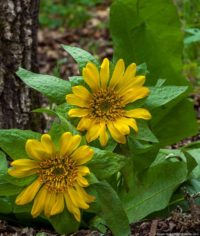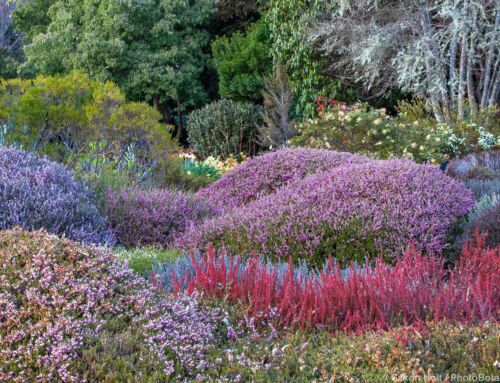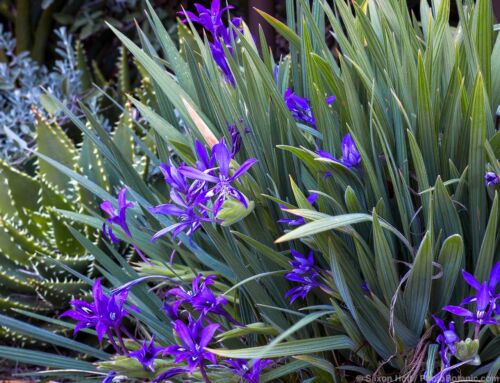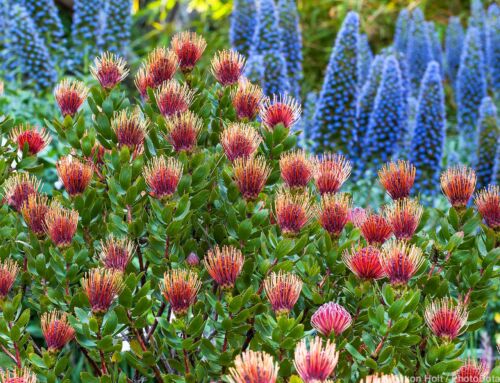Every bit as cheerful as the better known annual sunflowers, the eight to a dozen species of Wyethia, or mule’s ears, are low-growing perennials native to dry slopes, seasonally moist meadows, and woodland or forest openings in much of western North America. Most are 1-3 feet tall, with a loose rosette of large, broadly lance-shaped to oval, green or sometimes gray-green leaves and bright yellow sunflowers in late spring and early summer. Deciduous and dormant in winter, they reliably reappear as days lengthen in early spring.

Wyethia angustifolia
These are excellent plants for pollinators and other wildlife, attracting bees, butterflies, and other beneficial insects to the flowers and birds and small mammals to the seeds. With both a deep tap root and strong laterals, these slow-growing but long-lived perennials also are good for controlling erosion. Left to their own devices, they eventually may form large colonies.

Wyethia glabra
Plants can be hard to find except in nurseries that specialize in natives, but seeds of many are available online. Give them a sunny spot in the garden where their disappearance in mid- to late summer can be accommodated. Clay soils are fine for most as long as drainage is reasonably good. If winter and spring have not been too dry, little to no summer water is needed.
Mule’s ears are almost indistinguishable from balsamroots (Balsamorhiza species), the main difference being the presence of leaves on the flowering stems of mule’s ears but not on balsamroots.





Leave A Comment